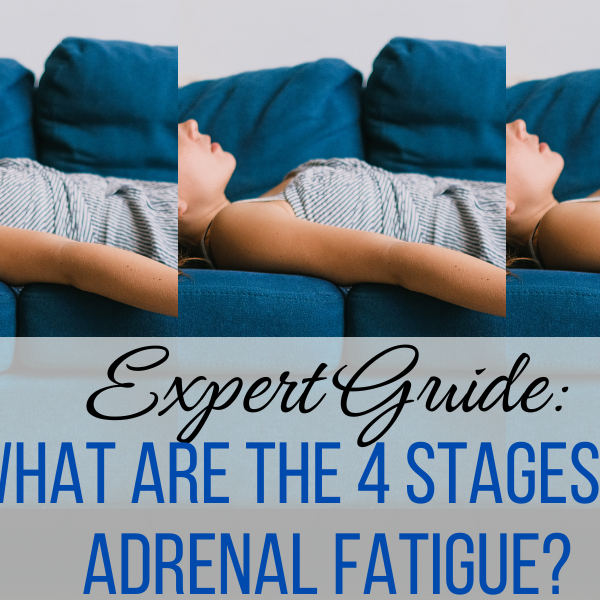Can’t sleep, mood swings, weight gain, irregular cycles, or feeling just “off”? You could be starting the stages of perimenopause- learn about these stages and how to smooth out your hormones!

The stages of perimenopause can start as early as your late 30s- and there can be many symptoms. But also many solutions- both natural, medical, lifestyle and more! Let’s learn all about perimenopause and how to navigate this phase of life!
Perimenopause: Definition and Overview
Perimenopause is the natural transition phase that leads to menopause, often described as a “puberty in reverse” due to the dramatic hormonal fluctuations that occur- but backwards. This life stage signals that the ovaries are beginning to slow down, and it typically starts in a woman’s late 40s to early 50s, but it can start as early as the late 30s to mid 40s.
Unlike menopause—which is defined as the point at which a woman has gone 12 consecutive months without a menstrual period—perimenopause is the long ramp-up to that milestone. During this time, estrogen and progesterone levels begin to shift in unpredictable ways, leading to a wide variety of symptoms both physical and mental.
Perimenopause consists of two primary stages, with substages, each with its own set of hormonal dynamics and symptoms:
Stage 1: Early Perimenopause — Estrogen Dominance and Subtle Changes
In the early phase of perimenopause, ovulation begins to slow, and progesterone is the first hormone to noticeably decline. Estrogen, however, does not follow a smooth downward path—instead, it begins to fluctuate, sometimes dramatically. This can cause periods to become shorter or longer, and may increase PMS symptoms, weight, acne, and some rather unique symptoms (check out this blog to learn more).
Because progesterone production drops (due to less frequent or less robust ovulation and declining ovarian function), estrogen can become relatively dominant, even if total estrogen levels are normal or slightly elevated. This creates a state often referred to as “estrogen dominance.”
Common Signs of Estrogen Dominance in Phase 1:
-
Shortened menstrual cycles
-
Heavier or more painful periods
-
Breast tenderness and swelling
-
Mood swings or heightened anxiety before periods
-
Fluid retention or bloating
-
Difficulty sleeping
-
Worsening PMS symptoms
Estrogen dominance and rising and surging estrogen, also stimulates the endometrial lining more aggressively, leading to heavier or prolonged menstrual bleeding for some women. This imbalance can also contribute to fibroids or endometrial hyperplasia over time if left unaddressed.
Stage 2: Late Perimenopause — Estrogen and Progesterone Decline
As you move further into perimenopause (typically late 40s to mid-50s), ovulation becomes sporadic or ceases entirely. This causes both estrogen and progesterone to decline, although estrogen may still spike unpredictably at times. The body is gradually reducing its reproductive function so fertility is greatly declining in preparation for menopause.
Hallmark Changes in Late Perimenopause:
-
Missed periods or long cycles
-
Spotting between periods
-
Night sweats and more frequent hot flashes
-
Vaginal dryness or thinning
-
Brain fog or memory lapses
-
Low libido
-
Worsening sleep disturbances
-
Increasing joint pain or muscle aches
During this stage, the drop in estrogen affects the hypothalamus, the body’s temperature regulation center, leading to vasomotor symptoms like hot flashes. Estrogen is also involved in neurotransmitter regulation, so its decline can increase the symptoms of anxiety, depression, and mood swings. The gradual loss of progesterone contributes to sleep disruption, including insomnia (both the inability to fall asleep and stay asleep), as well as difficulty “winding down” at night.
Duration and Timing of Perimenopause
On average, perimenopause lasts four to eight years, but for some women it may be as short as a few months or as long as a decade. Factors such as genetics, stress, smoking, diet, fitness level, and overall health can influence when you begin this transition and how long it lasts.
According to the Cleveland Clinic, smokers tend to enter menopause one to two years earlier than nonsmokers, likely due to tobacco’s effect on ovarian aging and estrogen metabolism. Chronic stress, poor sleep, and elevated cortisol levels may also contribute to earlier hormonal decline by placing a long-term burden on the adrenal glands and hypothalamic-pituitary-ovarian (HPO) axis.
Women with poor dietary habits, especially those high in sugar and/or caffeine, or deficient in key nutrients like B vitamins, magnesium, and healthy fats, may struggle more with hormone production and clearance. This could potentially intensify symptoms or make perimenopause come on earlier. In contrast, regular physical activity, a nutrient-rich, anti-inflammatory diet, and healthy sleep and stress management may help support a more balanced, smoother, and gradual shift.
Those women who experienced early puberty (before age 11) may also experience a longer perimenopause due to a longer cumulative exposure to hormonal cycling throughout life. Genetics, toxin exposure, body composition, and metabolic health also play key roles in shaping both the timing and symptom intensity of perimenopause and menopause.
Symptoms of Perimenopause
While every woman’s journey is unique, some of the most common symptoms during the various stages of perimenopause include:
-
Irregular periods
-
Heavy or light bleeding
-
Hot flashes and night sweats
-
Sleep problems
-
Fatigue and low energy
-
Anxiety or irritability
-
Depression or emotional sensitivity
-
Brain fog and memory issues
-
Vaginal dryness or itching
-
Weight gain, especially in the abdomen
-
Loss of libido
-
Joint stiffness
-
Breast tenderness
-
Urinary urgency or incontinence
It’s important to remember that not all women experience every symptom—and the severity can vary widely. Some sail through perimenopause with minimal issues, while others struggle with sometimes debilitating symptoms that affect their quality of life.
You can also check out this video:
The above symptoms can also be present across both stages as hormones fluctuate and don’t follow the rules- there really are no rules!
Perimenopause: What’s Really Happening?
Estrogen Fluctuation
Estrogen during perimenopause does not simply fall—it sometimes swings wildly. One month it may be sky-high, leading to bloating, migraines, and mood swings, and the next month it may be too low, causing hot flashes or vaginal dryness. This inconsistency makes it hard to predict symptoms and complicates hormone testing. In these blogs, you can learn more about starting points with female hormone testing and at-home peri and menopause testing.
Progesterone Decline
Progesterone steadily declines due to fewer ovulatory cycles. Since this hormone helps with sleep, mood regulation, and the calming of the nervous system (via GABA receptor stimulation), its reduction often leads to poor sleep, increased anxiety, and premenstrual symptoms.
Over time, the combination of estrogen fluctuation and progesterone loss creates a turbulent hormonal environment that affects everything from brain function to skin elasticity, joint symptoms, and metabolic health.
Natural Support for Perimenopause
While medical interventions may be necessary for some women, many find significant relief through natural, functional medicine-based approaches. These lifestyle and herbal strategies can help balance hormones, support adrenal function, and ease common perimenopause symptoms.
Lifestyle Support for Perimenopause
-
Stabilize Blood Sugar
-
A diet high in refined carbs can worsen estrogen dominance and increase inflammation. Refined carbs can be sugars but also carbs made of white flours or carbs without significant fiber. For example foods with one gram or less of fiber per every 10 grams of carbohydrates.
-
Focus on fiber-rich whole foods, lean proteins, and healthy fats.
-
Limit sugar and high-glycemic foods.
-
-
Reduce Stress
-
Chronic stress increases cortisol, which further depletes progesterone. When our systems are stressed over long periods of time our body can divert hormone production away from progesterone to further support the cortisol pathway.
-
Incorporate yoga, mindfulness meditation, journaling, or nature walks to help lower cortisol. Staying away from excess caffeine, long, intense exercise, or toxic relationships can also be quite helpful.
-
-
Exercise Regularly
-
Combine strength training (for bone density and metabolic health) with gentle cardio (not long and intense cardio) and restorative movement.
-
Exercise improves insulin sensitivity and reduces hot flashes and mood symptoms. Afternoon exercise can be even more helpful for boosting insulin release, but incorporate it anytime that works in your schedule- forming an exercise habit and finding something you enjoy are the most important factors.
-
-
Prioritize Sleep
-
Keep a regular sleep-wake schedul to support healthy hormones.
-
You could also try magnesium glycinate or melatonin to support restful sleep. I also love herbal adaptogenic blends like this Gaia product:
Gaia Herbs SleepThru - Natural Sleep Support Supplement with Organic Ashwagandha Root, Organic Magnolia Bark, Passionflower, and Jujube Date - 120 Vegan Liquid Phyto-Capsules (60-Day Supply)- Supports Relaxation & Sleep: Contains ashwagandha, passionflower & jujube to support restful sleep
- Adaptogenic Supplement: Adaptogens help support the body’s stress pathways to let you rest well.*
- Promotes Restful Sleep for Occasional Sleeplessness: This plant-based supplement supports deep sleep
- Purity-Tested: Our SleepThru supplement is vegan, dairy & gluten-free & proudly made in NC, USA
- Our Story: Since 1987, our purpose has been to connect people, plants, and planet to create healing
-
Limit screens and caffeine at night. If you must be on a screen try wearing amber glasses and turn on nighttime mode to help increase your natural production of melatonin as melatonin can gradually decline as we approach perimenopause.
-
-
Support Detox Pathways
-
The liver plays a major role in hormone clearance. It helps clear excess and toxic recirculating estrogen.
-
Eat cruciferous vegetables (broccoli, cauliflower, kale) to help liver and hormone detoxification.
-
Consider seed cycling or gentle liver-supportive supplements like milk thistle.
-
Herbal and Nutritional Support for Perimenopause
There are several botanicals and nutrients traditionally used to balance hormones and support the body through this transition, let’s look into some that I find most helpful with my patients:
1. Vitex (Chaste Tree Berry)
-
Supports healthy progesterone production by promoting regular ovulation.
-
Helpful in early perimenopause for cycle regulation and PMS symptoms, and helpful throughout all of the stages of perimenopause to support better production of progesterone.
2. DIM (Diindolylmethane)
-
Derived from cruciferous vegetables.
-
Supports estrogen metabolism and detoxification.
-
May reduce estrogen dominance symptoms like breast tenderness or mood swings.
3. Maca Root
-
Adaptogenic herb that supports the HPA axis and helps with energy, libido, and mood.
-
Can be helpful throughout perimenopause as this herb can also help reduce hot flashes. Check out this blog to learn about a powerful type of Maca root!
4. Ashwagandha
-
Can help balance cortisol levels, support thyroid function, and improve stress resilience.
-
Promotes calm and may improve sleep quality.
- Always talk to your healthcare provider before starting any treatment- natural or prescription. Ashwagandha can sometimes be contraindicated in people with autoimmune disease.
5. Black Cohosh
-
Traditionally used for hot flashes and night sweats.
-
May work by modulating serotonin receptors.
6. Rhodiola Rosea
-
An herbal adaptogen for fatigue and mood support.
-
Helps buffer the effects of physical and emotional stress.
7. Magnesium
-
Calms the nervous system, eases muscle tension, and supports progesterone pathways.
-
Magnesium glycinate or malate forms are especially effective as they help with the above without overstimulating the bowels like magnesium citrate or oxide might.
8. Omega-3 Fatty Acids
-
Reduce inflammation and support mood and cardiovascular health.
-
Important during the estrogen decline phase for brain and heart health.
When to Seek Medical Support
If symptoms are significantly impacting your quality of life, it may be time to talk with your healthcare provider. You may benefit from:
-
Bioidentical hormone therapy
-
Low-dose oral contraceptives (early perimenopause), not my first choice with my patients but many find it effective
-
SSRIs or SNRIs for mood or hot flashes, again not my first choice, but at times can be life changing
-
Non-hormonal vaginal estrogen or lubricants
-
Functional testing (DUTCH test, hormone panels)- I do use these tests quite often to guide therapy with my patients.
It’s necessary to individualize treatment and consider not just hormone levels but lifestyle, stress, sleep, and gut health.
Final Thoughts: Embracing the Transition
Perimenopause is a huge biological shift, but it doesn’t have to be an intensely disruptive one. Understanding your body’s natural rhythms, recognizing the signs of estrogen dominance and hormone decline, and implementing targeted lifestyle and herbal strategies can help ease this transition, making it smoother and less stressful.
With the right tools, you can feel empowered, not overwhelmed, as you move through this next phase of life. You are not “broken” or “losing your mind”—you are evolving, and with support, that evolution can be graceful, strong, and deeply wise. And you are not alone!
If you’re struggling or unsure where to start, reach out to a qualified healthcare provider who understands the nuances of perimenopause. With informed care, this shift can be one of growth, healing, and renewed self-awareness!
You can also check out my videos on perimenopause, and my other blogs to help you along the way!


Dr. Shelley Meyer is a board-certified family physician and Institute of Functional Medicine-certified functional medicine physician, as well as a Registered Dietitian. She is passionate about helping women navigate the roller coaster of perimenopause and postmenopause. She has her own Functional Medicine Practice in Denver, Colorado.






Leave a Reply
You must be logged in to post a comment.